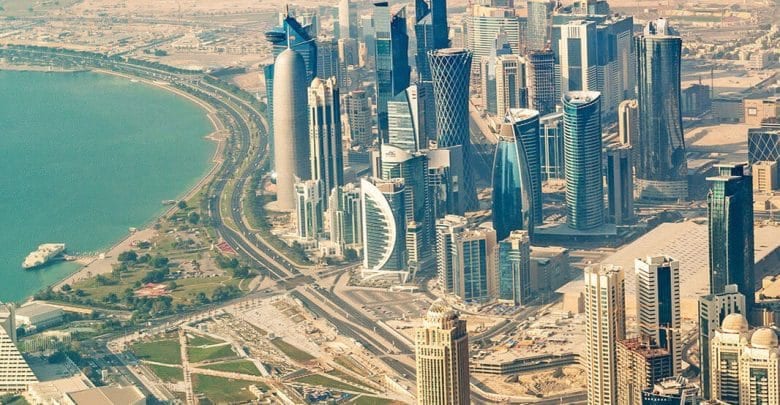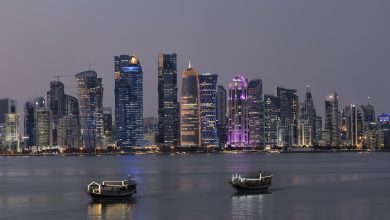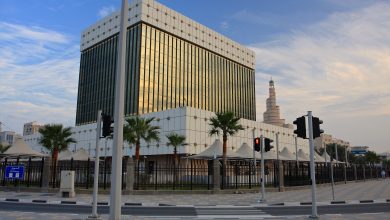
OPEC: Qatar raises its oil production to 609 thousand barrels per day
أوبك: قطر ترفع إنتاجها النفطي لـ 609 آلاف برميل يومياً
DOHA: The OPEC Reference Basket (ORB), an important benchmark for crude oil prices, ended October higher, increasing by $2.21, or 2.9 percent month-on-month (m-o-m), to average $79.39/b. This is the highest monthly average since October 2014, the Opec monthly oil report noted yesterday.
Crude oil futures also peaked in early October, hitting a four-year high, with ICE Brent reaching $86.29/b, as the market focused on concerns over potential oil supply shortages. ICE Brent increased by $1.52 m-o-m, or 2 percent, reaching $80.63/b in October, while NYMEX WTI rose by 67¢, m-o-m, or 1.0 percent, averaging $70.76/b.
Year-to-date, ICE Brent was $20.54, or 39 percent, higher at $73.58/b, while NYMEX WTI increased $17.63, or 36 percent, to $67.23/b, compared with the same period a year earlier.
The Opec monthly report noted in 2018, oil demand growth is anticipated to increase by 1.50 mb/d y-o-y, a downward revision from the previous month of 40 tb/d, mainly due to weaker-than-expected oil demand data from the Middle East.
Expected total oil demand for the year is anticipated to reach 98.79 mb/d. In 2019, world oil demand growth is forecast to grow by 1.29 mb/d y-o-y, about 70 tb/d lower than last month’s projection, with total world consumption to reach 100.08 mb/d. Non-Opec oil supply growth in 2018 is estimated at 2.31 mb/d, an upward revision of 0.09 mb/d from the previous month’s assessment.
On the supply-demand balance, the Opec report noted demand for Opec crude in 2018 is estimated at 32.6 mb/d, 0.9 mb/d lower than the 2017 level. In 2019, demand for Opec crude is forecast at 31.5 mb/d, around 1.1 mb/d lower than the estimate 2018 level.
Commenting on the Opec-member countries’ economic performance, the report noted Qatar’s GDP expanded by 2.5 percent y-o-y in Q2, 18, up from 2.0 percent in Q1, 18. The sector of mining and quarrying shrank by 1.1 percent y-o-y in Q2, from a 2.1 percent decline in the previous quarter.
While the non-mining and quarrying sector posted growth of 6.1 percent y-o-y in Q2, up from 5.8 percent in the previous quarter. As a part of the non-mining and quarrying sector, manufacturing showed robust growth of 14.1 percent y-o-y in 2Q18, from 10.8 percent in 1Q18. The construction sector continued its strong performance.
By Satish Kanady I The Peninsula
كشف التقرير الشهري لمنظمة أوبك، الصادر اليوم، ارتفاع إنتاج دولة قطر خلال أكتوبر السابق بواقع 14 ألف برميل يومياً، وطبقاً للتقرير، فقد بلغ إنتاج قطر خلال أكتوبر الماضي 609 آلاف برميل يومياً، مقابل 595 ألف برميل يومياً في سبتمبر السابق له.
وفي المقابل خفضت 6 دول إنتاجها النفطي في الشهر الماضي، على رأسها إيران التي تراجع إنتاجها 156 ألف برميل يومياً على خلفية العقوبات الأمريكية، وتليها فنزويلا بـ40 ألف برميل.
وتراجع الإنتاج النفط للكويت خلال أكتوبر الماضي بواقع 33 ألف برميل، وتتبعها نيجيريا بـ17 ألف برميل، وأخيراً الجزائر والإكوادور بواقع 4 آلاف برميل، و3 آلاف برميل على التوالي.
وبشكل عام فقد ارتفع الإنتاج النفطي لمنظمة أوبك خلال شهر أكتوبر الماضي بواقع 127 ألف برميل يومياً، ليصل إلى 32.9 مليون برميل، مقابل 32.77 مليون برميل في سبتمبر.
وبحسب رويترز قال مصدران مطلعان الاثنين الماضي إن قطر للبترول تعرض ثلاث شحنات من خام الشاهين للتحميل في يناير كانون الثاني عبر مزاد وذلك ارتفاعا من شحنتين في الشهر السابق.
يبلغ حجم الشحنة الواحدة 500 ألف برميل ويغلق المزاد اليوم على أن تظل العروض سارية حتى اليوم التالي، وتقول مصادر تجارية إن من المتوقع أن تصدر قطر للبترول ما يصل إلى 15 شحنة من خام الشاهين في يناير كانون الثاني بارتفاع طفيف عن الثلاث عشرة أو الأربع عشرة شحنة المعتادة شهريا.



